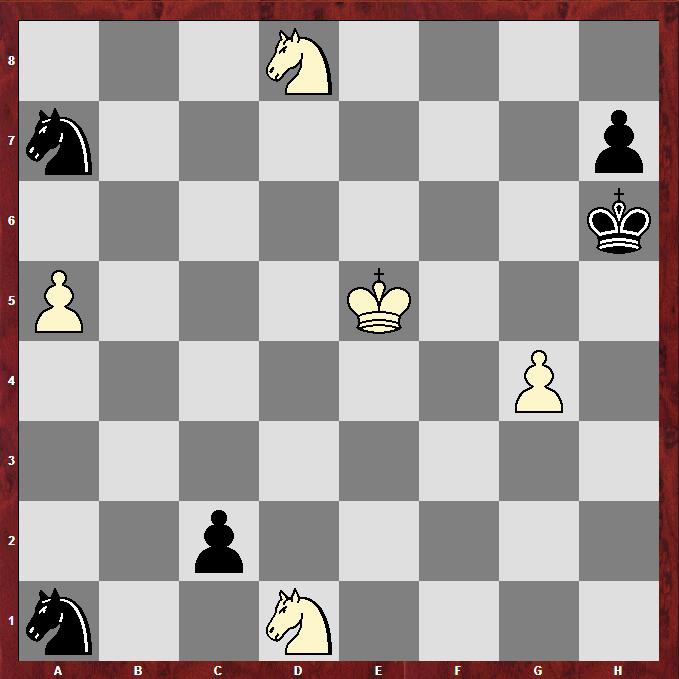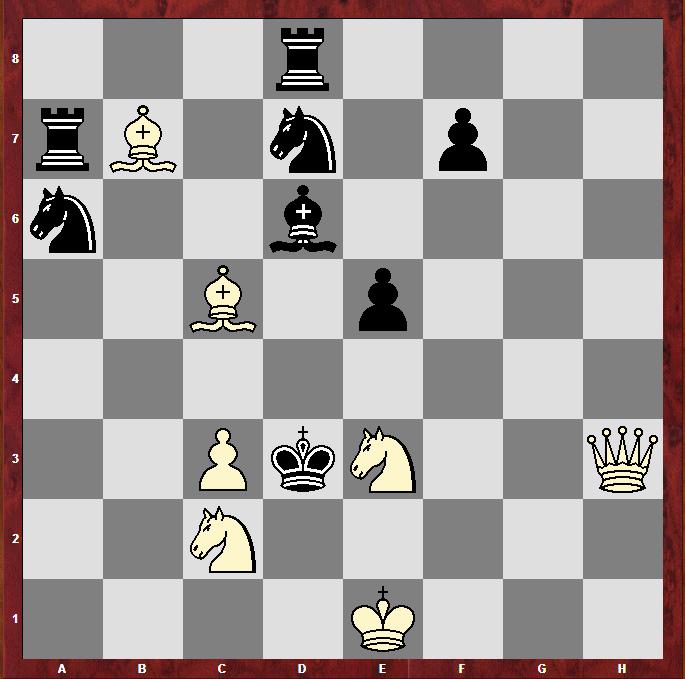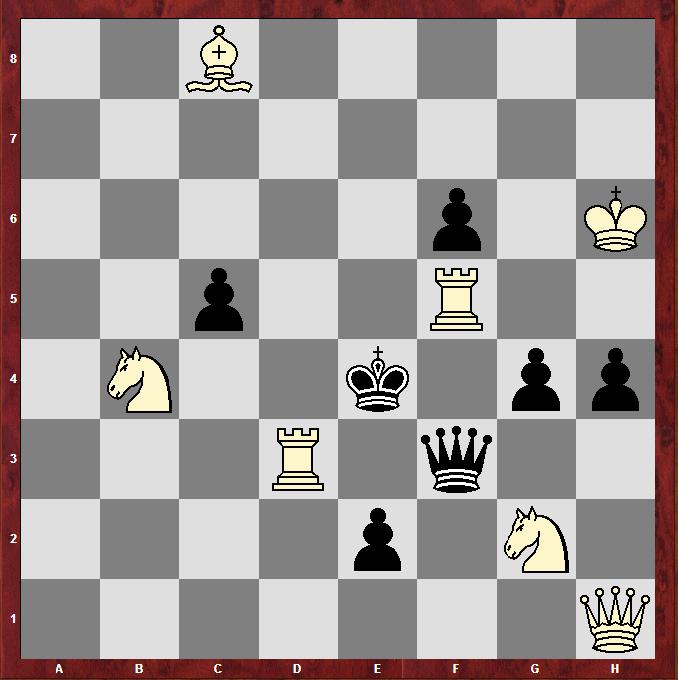
White to move and draw
|
A. Trzęsowski
|

White to move and draw
|
A. Trzęsowski
|

White to mate in three
Comments
While the chess problem printed in Problemas 1963 can appear in a real chess game, it is not the case for the one from the M. Wróbel Memorial 1961. Namely, after 1.Na1 (and next 2.Qf1+), the black defense is realized through the attack of the white bishop on c5. Consequently, we obtain the triple of distant blocks on c5 and the corresponding triple of perfect checkmates. The word "perfect" means here that we are dealing with such checkmates that all fields around the black king are attacked by only one white figure! The chess problem
|
A. Trzęsowski
|

White to mate in two
is yet more difficult to realize in a real chess game. We have here the following virtual black attacks: 1...Qf4+ (2.Nxf4#) and 1...Qe3+ (2.Nxe3#). In the illusive solution 1.Qc1?, these checkmates are changed: 1...Qf4+ 2.Qxf4# and 1...Qe3+ 2.Qxe3#. This solution is illusive because after 1...Qf2! we are not able to checkmate in the second move. The true solution 1.Qa1 leads to the next change of checkmates following the checks 1...Qf4+ and 1...Qe3+.
So, we can define chess problems as such positions on the chessboard that realize chess conceptions, being mostly very complicated and not observed in real chess games, but still consistent with the chess rules.